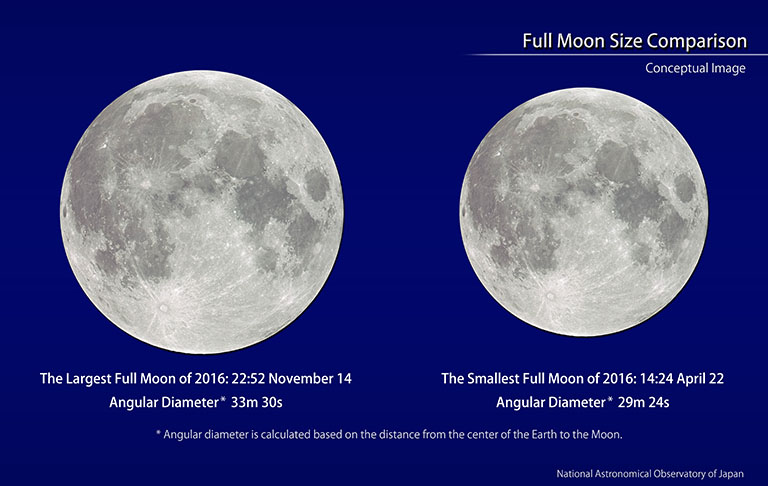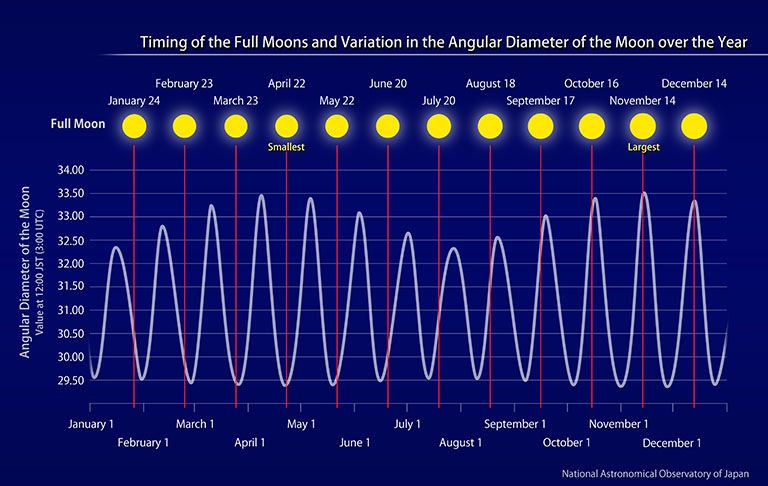Astronomical Events Information | 2016 | April
This Year’s Smallest Full Moon
Do you know why the size of the full moon varies?

In 2016, there is exactly 1 full moon every month.The full moon of April 22 appears the smallest of all the full moons this year.

The Moon orbits around the Earth, but because its orbit is elliptical, the distance between the Earth and the Moon changes gradually with time. Therefore the apparent size (angular diameter) of the Moon increases when the distant between the Earth and the Moon is close, and decreases when the distance is far. Also, the orbit of the Moon changes as it is affected by the gravity of the Sun and the Earth, so that the distance when the Moon is at its closest position to the Earth (perigee), and the distance when the Moon is at its farthest position from the Earth (apogee) are different each time.
On April 22, the Moon passes apogee (approximately 406,000 km from the center of the Earth) at 1:05 JST (16:05 April 21 UTC); and it reaches full phase at 14:24 JST (5:24 UTC). At the moment of the full moon, the Moon’s angular diameter is 29 arcminutes 24 arcseconds. This is the smallest the full moon appears this year. This year’s largest full moon can be seen at 22:52 JST (13:52 UTC) on November 14, with an angular diameter of 33 arcminutes 30 arcseconds. The Moon passes perigee (approximately 357,000 km from the center of the Earth) at 20:21 JST (11:21 UTC) on November 14.